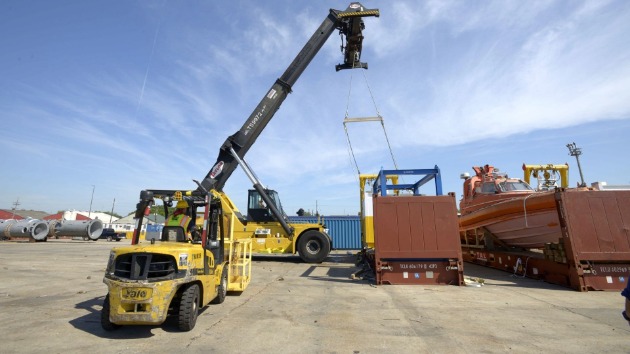The U.S. Bureau of Labor Statistics reports that there are more than 50,000 “struck by falling object” recordable injuries every year in the United States. That’s one injury every 10 minutes caused by a dropped object in the workplace. Anytime overhead work is performed there is a real risk of tools, material, or equipment falling from an elevated area. There is a danger present for anyone under or near the elevated work position when working at elevated heights.
Understanding Exposures for Being Struck By Objects Lifted or Handled
A struck-by object lifted or handled hazard refers to a hazard in which a worker could potentially be hit and injured by an object, tool or equipment. Struck-by hazards are mostly related to improper material and equipment handling such as a pedestal crane lifting pipe out of a hold or a crawler crane lifting steel plate onto a dry dock. In the industries covered by the U.S. Longshore and Harbor Workers' Compensation Act (requiring USL&H coverage), it is almost unavoidable to be working in an area where struck-by objects handled or lifted hazards are present.
This type of exposure and controlling the exposures can require specific work planning. While some hazards are easily corrected, many do require additional evaluation and planning to eliminate.
Struck-by objects being lifted or handled hazards originate from many sources. The most common include:
- Loads being lifted by a crane operations
- Tools, equipment, and materials being left loose on a load
- Poorly stacked materials that may fall, slip and slide
Considerations When Working With or Around Objects Being Lifted or Handled
Be sure if you are guiding a load with a tag line that your travel path is clear and safe before the load is suspended. You will be spending a lot of time watching the load, rather than where you are going. It would be a shame to take all of the precautions to avoid being caught by the load, only to be injured in a fall.
Exclusive for ALMA Members: Struck-By Objects Lifted or Handled Resource Site
As part of our monthly Safety Focus initiative, the ALMA member resource website has a page providing safety resources related to struck-by hazards. Resources include:
- Guidance around suspended load and drop zone safety
- Drop Zone Plan template
- OSHA guidance
- A facility poster cautioning workers about the danger of struck-by hazards
- Toolbox talks
- Safety bulletins


